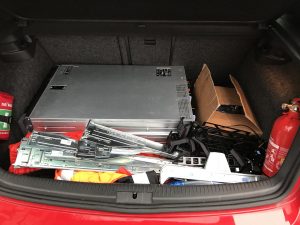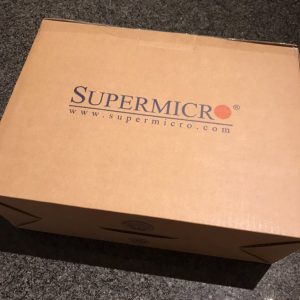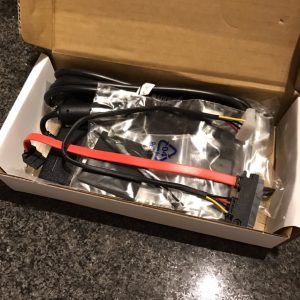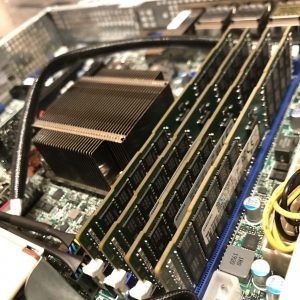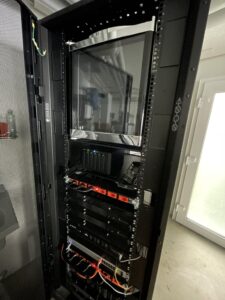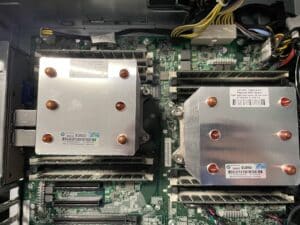The story of my homelab
On this page, I’ll introduce you to my homelab. It all started many years ago with VMware Workstation 12. I made the first experiments on how to run a nested ESXi server. It went pretty well despite the lack of hardware. It wasn’t a real homelab, it was more kind of a proof of concept. When I replaced my old game computer, I had some good-performing hardware to install ESXi directly and run some nested ESXi on top of it. I added some SSDs and an SAS controller to have a reasonably well-performing storage pool. You can read more about my first steps in my homelab here. I also posted my first physical homelab server (my old gaming rig / white box ESXi) on the OpenHomelab project.
Homelab Gen 1
Over time I looked for additional homelab parts. Like another server, some storage, and networking. It ended in adding an old HP ProLiant DL380 G7 server, an HP P2000 SAS storage with some nearline SAS disks, and an HP Aruba switch. So I had now two hosts to play around with. Without big constraints, except storage. I reused the SSDs of my first hardware host and I added some more to that ProLiant. But that wasn’t enough. My goal was to run a VMware vSAN cluster natively on the ESXi hosts. You know, some real beef.
Homelab Gen 2
One of our Swiss German VMUG members told me that he has some DELL PowerEdge servers he got cheap from a customer. That was very tempting. I was convinced very quickly and bought these PowerEdge servers. It took a weekend or so to rebuild my homelab. I removed the SSDs from my ProLiant and gave them to the PowerEdge servers. I installed ESXi and quickly set up a domain controller and a vCenter server appliance. During the wintertime, it was pretty nice, no heating was required in the basement. But during the summer it became too hot. The air felt like in the Caribbean Sea and the servers made some more noise because all the hot components in the servers had to be on a cool level.
Homelab Gen 3
I came to the conclusion that I have to reduce my own data center footprint. But how? I want good performance, but I don’t want to heat up the basement just with huge servers. I did some research. I like Supermicro servers very well, even if I didn’t have one until yet. They are small, don’t consume much power, don’t produce much heat, and don’t have such a noise level as a ProLiant or a PowerEdge. But there’s one thing. You barely find these servers as used or refurbished. I really searched for it, I really did. I checked online stores specialized for used servers in the US, UK, and continental Europe. But the prices weren’t what I expected. And then there is also shipping adding additional costs.
What’s next?
Over time I gathered more information, I read blog posts about data centers in a box and how others built their homelabs. That was very inspiring! So many ideas, and so much spirit! The bloggers and homelabbers out there really love their stuff. So do I! I decided to buy new hardware. That’s somehow a first. Sure, I bought new hardware for my current gaming rig. But this one runs “on production”. It’s my daily workstation where I check emails, edit photos and videos, and write blog posts. It’s not rotting in the basement. Okay, that’s harsh, I take good care of my hardware in the basement. Promise. But you know what I mean.
The next evolution of my hardware will be some Supermicro servers with M.2 SSD to use for an all-flash vSAN cluster. Also, there are some Synology NAS servers where I have my ISO files, the content library, and also some NFS and iSCSI storage. The servers will be connected by 10Gig SFP+ for vMotion and vSAN. Maybe I’ll invest in a Synology NAS with the option to add a 10Gig SFP+ card as well, at the given time. Currently, the homelab budget is planned for new server hardware.
As already mentioned in the opening post for my new homelab (you can read more about it here) I’d like to show you my current setup. It consists of three Supermicro E300-8D servers with all-flash storage for VMware vSAN. The servers have 10Gig SFP+ ports which are used for vSAN and vMotion. I went for only three nodes due to a lack of enough budget, and because it’s the technically required minimum number of vSAN nodes. Oh, and for sure there is some space for increasing the lab, which means that I will add a fourth node sometime.
Homelab Gen 4a
This homelab generation consists of three SuperMicro servers that are documented here.
Homelab Gen 4b
I wanted to have a rack for the Gen 4 homelab. But I didn’t want to buy an expensive rack, nor did I find a cheap second-hand rack that fitted my bill. So I decided to build one by myself. I documented the process here.
Off to new horizons!
Homelab Gen 5
There weren’t any big changes. They were huge! First, I got my hands on a 49-unit IT rack from APC. I always dreamed about having such a rack for my homelab. Because everyone should have a rack, shouldn’t it? I also got rid of some old HPE hardware. The rack found its place in the garage of the house I built together with my wife last year. Let’s just imagine my garage to be my data center then… But to be honest, the first “production” deployment wasn’t the homelab hardware itself or any virtual machine running on it, but a small beer fridge, the smallest one I was able to find to fit into the rack 🙂
Homelab Gen 6a
The huge rack lasted for a bit more than a year. That means it has been there in my garage for about a year now, but the homelab hardware was installed only for a few months. The rack was, to be honest, wasted space in my garage, and this space could be used better and more efficiently. So, time to say goodbye to this huge piece of metal! Instead, I replaced the huge rack with a heavyweight shelf to be able to store some boxes in the garage on the one hand and to have a small space for my homelab on the other. But I can’t just put the servers onto the shelf, so I bought a small desktop-size rack from StarTech, which fits perfectly for the SuperMicro servers and the networking equipment.
Homelab Gen 6b
The most recent addition to my homelab is an HP Z8 G4 workstation. I was using an HPE ProLiant ML150 Gen9 server for some basic homelab VMs like the domain controller, vCenter, jump host, etc. Unfortunately, it wasn’t performing very well. It worked, but you know, there is some room for improvement. So I was looking around for other servers but then stumbled across a Twitter post where someone used HPE workstations for his homelab. So that seed of an idea has been planted. And it grew and bloomed!
My homelab history/changelog
| July 2023 | Complete rebuild (link pending) |
| September / October 2022 | Complete rebuild (see the Homelab Gen 5 gallery above) |
| September / October 2020 | Partial rebuild (link) |
| December 2019 | Complete rebuild (link) |
| February 2018 | Complete rebuild |
| December 2016 | Added iSCSI / NFS storage (link) |
| July 2016 | Switched to old gaming rig (link) |
| June 2016 | First steps / VMware Workstation 12 (link) |








